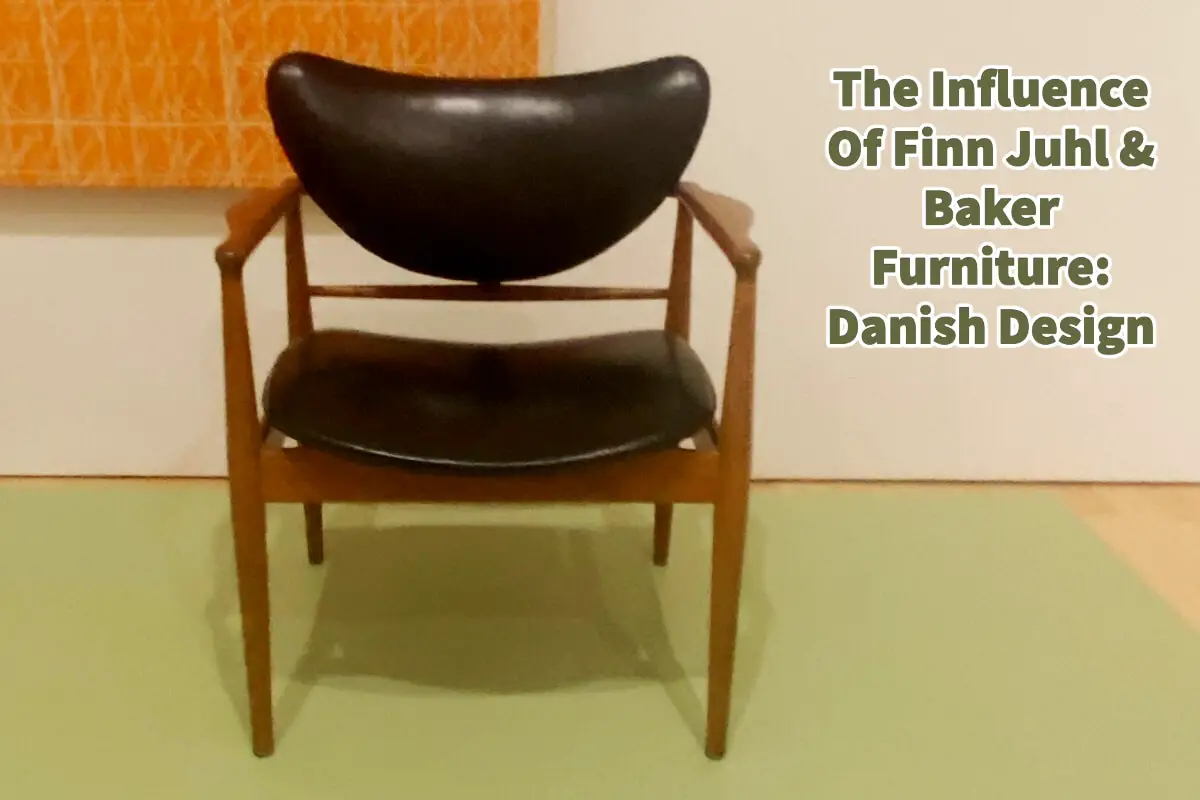When I recently attended the Scandinavian and The United States Design show at the Milwaukee Art Museum, one of the displays that caught my attention was the information on the collaboration between the Danish Designer Finn Juhl and Baker Furniture.
In the early 1950s, Hollis Baker, the president of Baker Furniture, saw an article in the Interiors Magazine about the Danish Designer Finn Juhl. He approached Finn Juhl for a collection of Danish chairs for the American market; the chairs were to be produced in the ie, Michigan factory. This collaboration started the American public’s knowledge of great Danish design.
Table of Contents
- The Rise Of Scandinavian Design In America
- Finn Juhl’s Contributions And Legacy
- Baker Furniture: The Legacy Continues
- The Lasting Influence Of Scandinavian Design In America
- Related Content
The Rise Of Scandinavian Design In America
In the late 1940s and early 1950s, a wave of fascination swept across America, a fascination with Scandinavian design. Through media outlets such as magazines and television, Americans were increasingly exposed to a different aesthetic marked by minimalism, functionality, and a deep respect for craftsmanship.
This was when the seed of appreciation for Scandinavian design was sown when Hollis Baker, the then-president of Baker Furniture, chanced upon the extraordinary work of Danish Designer Finn Juhl in the Interiors magazine.
The Danish Furniture Designer: Finn Juhl
Born in Denmark, Finn Juhl was an architect turned furniture designer who brought about a revolution in the design world. Known for his innovative designs that merged form and function, Juhl’s influence extended far beyond his home country.
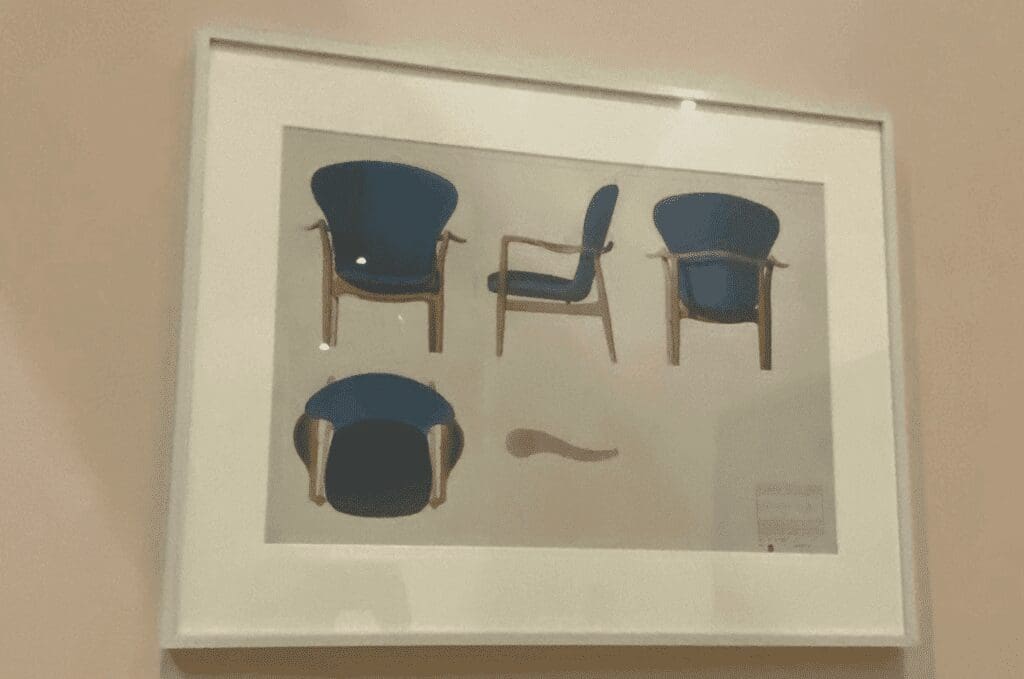
His work captured the attention of Edgar Kaufmann, Jr., the head of the Department for Industrial Design at the Museum of Modern Art in New York.
Kaufmann was so impressed with Juhl’s creations that he dedicated a comprehensive article to Juhl’s work in the Interiors magazine in 1948. Juhl’s designs, infused with high craft standards and modern aesthetics, were a beacon of Scandinavian design.
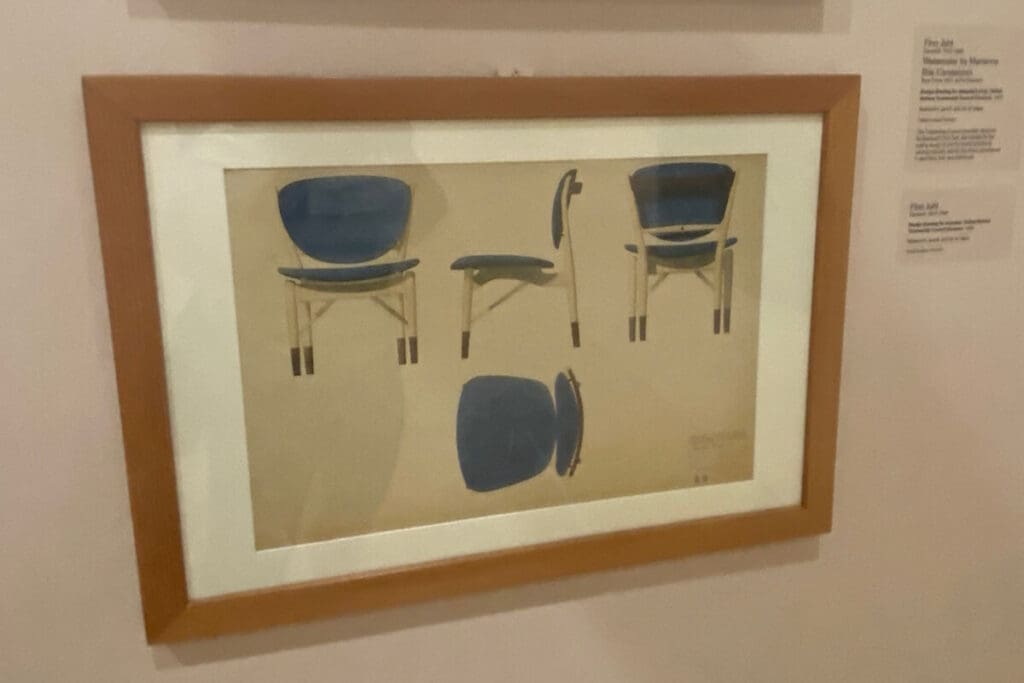
Finn Juhl believed that while “one cannot create happiness with beautiful objects, one can spoil quite a lot of happiness with bad ones.” This is how he based his design philosophy.
Finn Juhl And The Baker Furniture Collaboration
In 1950, the Baker Furniture Company of Grand Rapids, Michigan, approached Juhl with an offer to produce his designs at their American factory. Initially skeptical of American craftsmanship, Juhl’s concerns were assuaged after visiting Grand Rapids and viewing the Baker manufacturing facility firsthand.
Consequently, he agreed to the collaboration, and his designs were marketed under the ‘Baker Modern’ line.
This collaboration marked a significant shift in how Scandinavian design was perceived in America. Juhl’s work represented the successful marriage of traditional craftsmanship with modern mass-production techniques.
His collaboration with Baker Furniture began a large-scale introduction of Scandinavian, mainly Danish, design to the United States.
Finn Juhl’s Contributions And Legacy
Juhl’s contributions extended beyond the realm of furniture. In 1951–52, he designed the Trusteeship Council Chamber in the Headquarters of the United Nations in New York City, for which the Danish government contributed approximately $20,000 towards its construction. His work on the chamber is a testament to his versatility and skill.
Moreover, Juhl won five gold medals at the Milan Triennial in the 1950s, cementing his international reputation. He continued to design for the mass market throughout this decade, introducing his minimalist, functional aesthetics to a broader audience.
Juhl’s influence also extended into product design, where he designed refrigerators for General Electric and crafted glassware and ceramics. 1965, he was a visiting professor at the Institute of Design in Chicago.
Finn Juhl’s Influence And The American Market
Finn Juhl’s partnership with Baker Furniture in 1951 represented the first significant introduction of modern Danish furniture to the American market. This collaboration allowed Juhl’s innovative designs to reach a broader audience, shaping the American furniture design landscape for years.
The American market’s embrace of Scandinavian design, partly due to Juhl’s contributions, continues to resonate today.
The principles of functionality, simplicity, and craftsmanship, central to this design aesthetic, are foundational in contemporary American furniture design. Indeed, Finn Juhl’s legacy endures, reminding us that good design transcends boundaries, bringing beauty and function into our everyday lives.
Baker Furniture: The Legacy Continues
In 1957, Baker Furniture strategically acquired the Grand Rapids Chair Co. This acquisition expanded Baker’s product portfolio, allowing it to offer an assortment of more straightforward, less costly furniture under the Milling Road label.
This move signaled Baker Furniture’s commitment to catering to diverse consumer needs and preferences, reinforcing its position as a leading name in American furniture design.
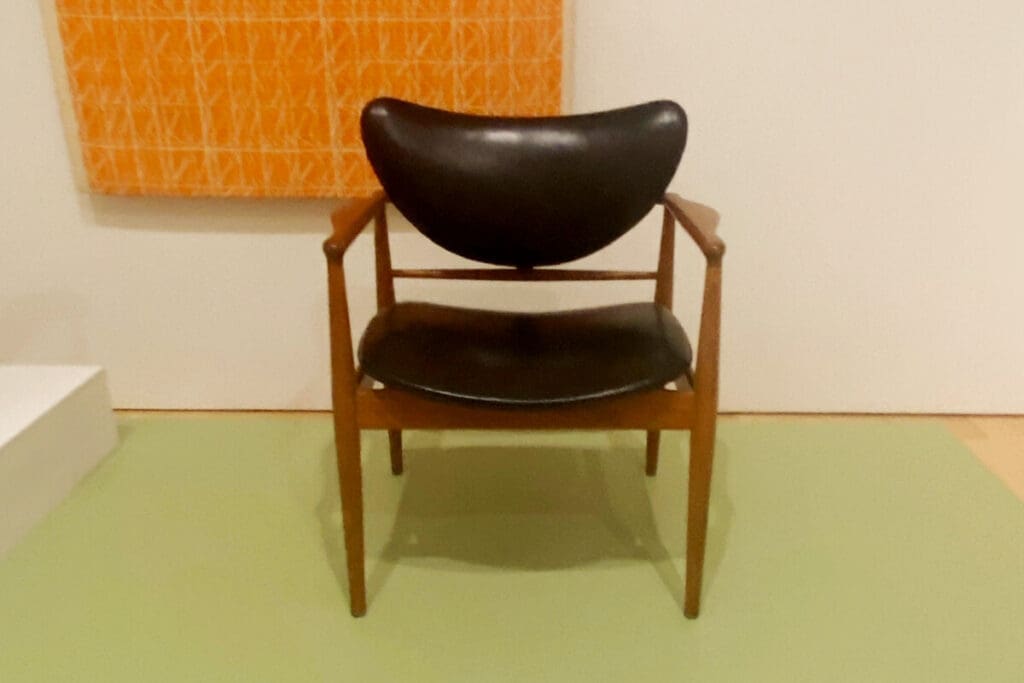
The Synergy: Finn Juhl And Baker Furniture
The collaboration between Finn Juhl and Baker Furniture was much more than a business venture. It was a meeting of minds, an amalgamation of distinct design philosophies, and a shared vision to introduce American audiences to the beauty of Scandinavian design.
This synergy resulted in an era-defining collection that balanced sophistication and accessibility, appealing to the evolving tastes of post-war America.
The Impact On American Design Aesthetics
The introduction of Scandinavian design, mainly Modern Danish design, significantly influenced American design aesthetics. This influence is evident in the mid-century modern design movement that swept across the United States in the mid-20th century.
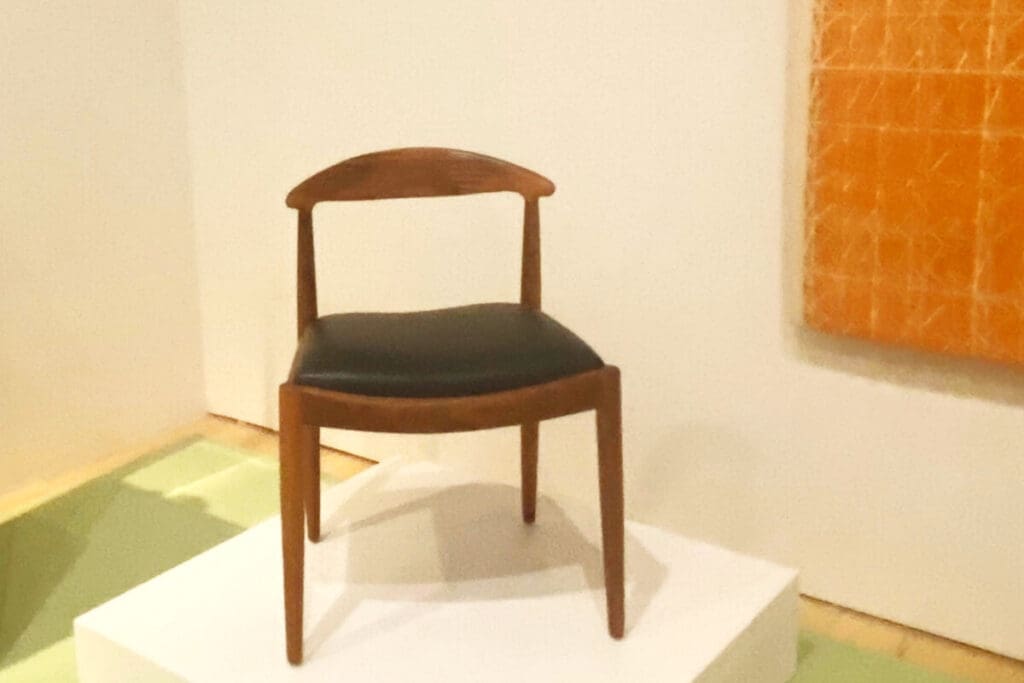
The simplicity and functionality inherent in Scandinavian design struck a chord with American consumers, offering a refreshing alternative to the luxury of previous design styles. This movement towards minimalism, coupled with an emphasis on craftsmanship, redefined what Americans saw as stylish, functional, and desirable in their living spaces.
Remembering Finn Juhl: A Design Maverick
Finn Juhl was not just a furniture designer; he was a trendsetter, an innovator, and a maverick who left an indelible mark on the design world.
His contribution to bringing Scandinavian design to the forefront of the American market was unparalleled. His creations continue to be celebrated and cherished for their aesthetic appeal and underlying simplicity and functionality philosophy.
Listen To Our Podcast About Scandinavian Fusion: The Influence Of Finn Juhl & Baker Furniture On Danish Design below or by clicking here.

The Lasting Influence Of Scandinavian Design In America
Today, Scandinavian design continues to captivate audiences around the world. Its influence permeates various design sectors, from interior decor and architecture to product design.
The legacy Finn Juhl and Baker Furniture created together is a testament to the enduring appeal of this design style. The one thing this exhibition I recently saw at the Milwaukee Art Museum showed was how many familiar designs that we still see on the market today were influenced or had ties in some way to Scandinavia.
This clearly shows how the successful marriage of Scandinavian design principles with American industrial capabilities paved the way for a new era in furniture design. It is a testament to the vision and craftsmanship of pioneers like Finn Juhl and industry leaders like Baker Furniture that Scandinavian design continues to resonate in the American consciousness and globally well into the 21st century.
Find out more about how Mondoro can help you create, develop, and manufacture excellent home decor and furniture products – don’t hesitate to contact me, Anita. Check out my email by clicking here or become a part of our community and join our newsletter by clicking here.
Mondoro gives out a FREE Lookbook to anyone interested. You can receive a copy of our latest Lookbook by clicking here.
Listen to our Podcast called Global Trade Gal. You can find it on all major podcast platforms. Try out listening to one of our podcasts by clicking here.
Subscribe to our Mondoro Company Limited YouTube Channel with great videos and information by clicking here.
Related Content
Pantone Trend Colors 2023 & Why They Matter
Pantone’s Trend Color for 2023 is Viva Magenta, a powerful bright color that shows the change and shift in the world. Pantone’s color of the year matters as their color choices continue to show the moods and transformations of the world and help us predict what trends and colors will continue to be necessary.
You can learn more by reading our blog, Pantone Trend Colors 2023 & Why They Matter, by clicking here.
What Is The Coastal Interior Design Style?
The Coastal Interior Design style combines coastal and traditional design into one design trend. The coastal interior design style is a tranquil and soothing trend that remains popular today. Even though the technique is used in many houses near a beach or lake, it continues to be a popular look and interior design that can be used anywhere.
You can discover more by reading our blog about What Is The Coastal Interior Design Style?, by clicking here.
Spring Color Palette We Love – Home Decor, Fashion, And Design
The springtime color palette is usually a color palette that includes pastel colors, as well as brighter, more vibrant hues. These colors will invoke a feeling of springtime and a renewal period. Springtime color palettes can be used in home, decor, fashion, and design.
You can learn more by reading the blog Spring Color Palette We Love – Home Decor, Fashion, And Design by clicking here.

